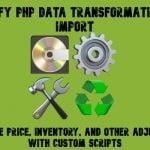The Ultimate Guide To System Integration (API, iPaaS, ESB, ETL, automation, no-code, solution architecture, consultancy)

Engineering defines system integration as a process of connecting the component subsystems into a single whole with the system’s overarching functionality. Information technology, in its turn, describes this process as different computing systems and software solutions combined to act as a coordinated whole. Both system integration definitions share the same idea: two independent entities are bound together and merged into something powerful, stable, and coherent. System integration incorporates a range of methods to achieve this goal, including manual programming, business process management, enterprise application integration, and computer networking. Can you imagine that such complex processes may happen automatically and without a single line of code written by the person who creates the integration?
That’s how system integration can be implemented! In the following article, we explore how it happens nowadays and what its background is. You will first find out what automation is. We explain four types of automation and the impact of IT automation on system integration. After that, we proceed to the no-code principle. You will learn what it is and how it helps to create system integrations for non-technical users. Next, we briefly describe what API is and how important it is in integrating two systems. The chapter sheds light on the basics of API architecture and different types of APIs.
In the next chapter, you will learn what system integration is, what methods it uses, and what data integration patterns it incorporates. We also highlight the core types of system integration solutions along with system integration examples and ideas.
A separate chapter is dedicated to iPaaS as the most modern, powerful, and user-friendly way to integrate multiple systems. You will discover common iPaaS features and workflow. Also, we briefly explore ESB and ETL and their role in system integration.

If you want to integrate any system with your business tools in the most effective way – write to us!
Table of contents
Automation as your primary business assistant

While “automation” describes a wide range of technologies and processes, they all share the same goal – to reduce human intervention. No matter what way you choose, predetermining decision criteria, creating subprocess relationships, using related actions, and numerous other tricks work well if you need to automate the business or IT processes. So, what is automation?
Under automation, we assume a global trend of reducing human input in all spheres of modern business. For instance, business process automation (also known as digital transformation) is the technology-enabled automation of complex business processes that once were based on human labor but have been delegated to software applications and digital instruments. This transformation aims to streamline a business for simplicity, increase service quality, reduce human impact, decrease the count of errors, and reduce costs.
4 types of automation
Below, you can see four types of automation:
- Basic automation. Simple, rudimentary tasks are the object of basic automation. At this level, automation helps to streamline and centralize various routine tasks that happen under the hood of your business processes. While everyone can leverage the benefits of basic automation, nobody pays attention to them because they are a part of everyday life. Push notifications on your phone are a good example of basic automation. You no longer need to check your applications from time to time to see new information, such as a recently published YouTube video or an unread message. They automatically send notifications to your screen when a new message arrives or a video is published.

- Process automation. As for process automation, it goes a little bit further. At this level, the goal of automation is to deliver uniformity and transparency to business processes using dedicated software and business apps. Workflow automation is a perfect example of this level. For instance, you can install Improved Import & Export and use cron to automate regular product data exports from your Magento website to apply mass changes and reimport the edited table back. Or you can enable automated fulfillment for your gift card products on your Shopify website. Process automation usually increases business productivity and efficiency, delivers new business insights, and suggests solutions.
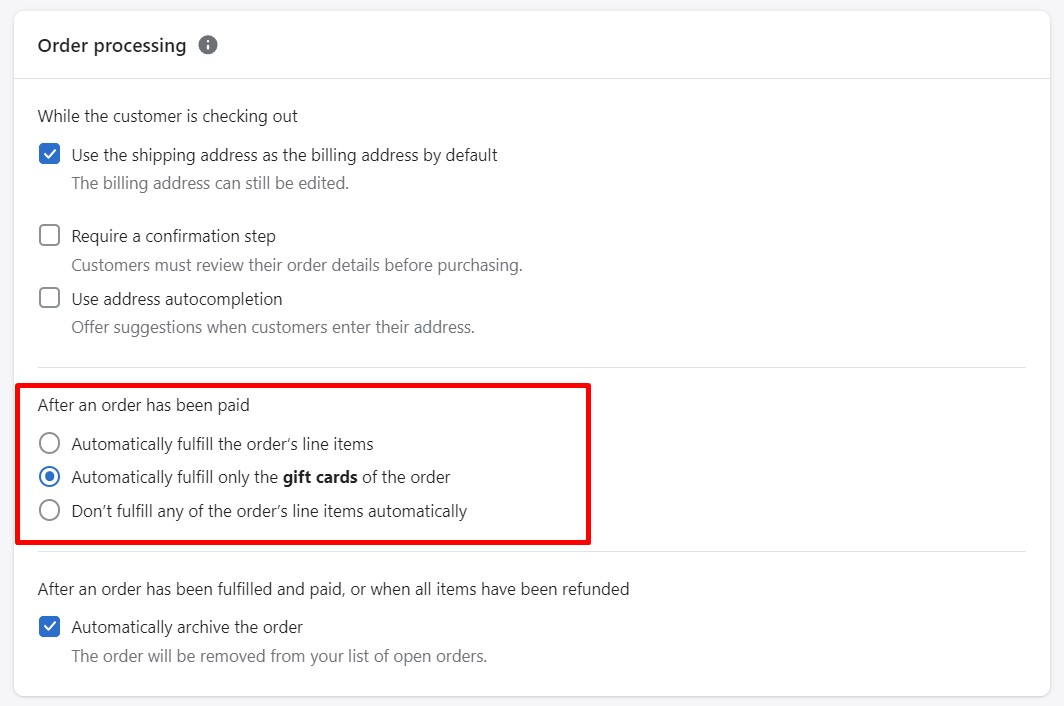
- Integration automation. At this level, automation takes place when several systems interact with one another. In other words, it is system integration automation. Nowadays, system integration and automation are tightly connected. In most cases, you cannot imagine system integration that runs with zero automation. For instance, you need to connect your e-commerce website to an ERP platform to process orders there. It is hard to imagine this system integration when you need to transfer order data to the ERP tool every time a new order is placed on your website and then deliver the corresponding output back. That’s when automated system integration comes in handy.

- AI automation. It is the most complex level of automation. Artificial intelligence (AI) automation means that machines not only automate various processes but also “learn” and make decisions based on past experiences. AI-powered automation may take place on both process automation and integration automation levels, improving the efficiency of the corresponding processes even more.
System integration & IT automation
System integration is always based on a set of repetitive processes. It means that you can harness automation to make the synchronization of the two systems much easier. The automation of integration-related processes can increase IT productivity and efficiency and, at the same time, eliminate human errors. The following IT automation is widely applicable today and can be streamlined in integration systems:
- Content management. Capture, store, activate, and analyze business content automatically when you work on it in a single system, combine it from multiple sources, or synchronize the corresponding data between two points.
- Document processing and management. Process documents that originate in one system or participate in system integration. Document processing solutions may leverage artificial intelligence to achieve even greater results in business document processing. At the same time, you can use automation to capture, track, and store information from digital documents, synchronizing it between two and more systems.
- Workflow automation. Harness rules-based logic to perform daily duties with limited to no human interaction. Automated workflows are suitable for both internal processes and system integration.
- Decision management. Decision management in automation is always related to artificial intelligence. The corresponding solutions can model, manage, and automate business decisions based on machine learning.
- Process mapping. Process mapping is something extremely important in terms of system integration. It identifies bottlenecks and enables cross-organizational collaboration between multiple systems. Its goal is to synchronize unrelated processes and combine different apps and environments into a well-organized and efficiently-functioning organism.
If you think that all these processes fall under the competence of IT specialists only, there is no reason to worry. Although coders still have more opportunities when it comes to automation, non-technical users can also streamline the latest achievements in this field due to no-code integration and development tools.
No-code integration & development

The no-code concept appeared when IT specialists started sharing tasks and responsibilities with non-technical users. Coders had to create tools that allowed everyone to build and deploy applications or at least maintain the existing processes without writing a single line of code. The idea was widely accepted by businesses all over the globe. As a result, we have various instruments with a simple user interface and drag-and-drop functionality that let users visualize the development process and define the underlying business logic. That’s how no-code development platforms appeared.
A no-code development platform is a tool that uses a visual development interface for building apps by dragging and dropping smaller software components with no previous coding experience. What is no-code integration?
No-code integration systems, in their turn, are web or cloud-based platforms that incorporate the no-code principle so that non-technical users can build connectivity in a drag-and-drop interface without IT involvement. In other words, you just need to specify system A and system B and choose what changes should be applied to the transferred data. That’s it.
In the early years of system integration, such interactions required writing many lines of code. Today, you only need to know which structural elements to choose to create a connection that satisfies your business demands. In other words, you need to understand the logic behind your business processes and the logic behind structural components that a no-code system integration platform offers.
Nowadays, the no-code approach allows the creation of websites, applications, automated workflows, and system integrations without technical know-how, where complex coding is replaced with a simple drag-and-drop activity. These are a few examples of no-code tools: Wix, HubSpot CMS, Appy Pie, Thunkable, etc.
But how did it happen that code complexity was replaced with drag-and-drop simplicity? The main trick behind no-code platforms is that they are built on APIs, but as an end-user, you never deal with them directly.
Watch this video to learn more about the no-code concept and discover no-code tools:
What is system integration?

System integration is the process of combining frequently incompatible systems in a way that focuses on enhancing value to the customer, such as increased product quality and performance, while also adding value to the business, such as reduced operational costs and improved response time.
Methods of system integration
There are four common methods of system integration:
- Vertical system integration (silo);
- Hub-and-spoke system integration (P2P)
- Star system integration (spaghetti);
- Horizontal system integration (ESB);
Let’s describe each one.
Vertical system integration (silo)
Vertical integration is the process of merging subsystems based on their functioning by establishing functional units known as silos. The advantage of this strategy is that the vertical system integration is completed quickly, and only the relevant vendors are involved. As a result, this strategy is less expensive in the short run. On the other hand, the cost-of-ownership might be significantly greater than in other techniques because, in the case of new or increased functionality, the only way to scale the system is to install another silo. It is not possible to reuse subsystems to construct new functionality.
For instance, you need to synchronize customer data from your Magento website with a CRM system. You install a customer import and export solution to establish the connection between the two systems. It is your first silo. The extension is relatively inexpensive and easy to use. Everything works fine, and you are happy with your new integration.
However, your business grows, and you decide to process your orders outside of your e-commerce store. New vertical system integration is waving on the horizon. Now, you need to purchase a module that provides advanced import and export capabilities for order data transfers. It’s your second silo. It is also budget-friendly and intuitive, but your expenditures multiplied. And they will continue rising every time an additional data transfer solution for a new entity is required.

Star system integration (P2P)
Star or spaghetti integration is a system integration procedure in which each system is linked to each of the remaining subsystems. From the perspective of the integrated subsystem, the connections resemble a star. However, the entire system diagram of connections resembles spaghetti. The cost of spaghetti system integration varies depending on the interfaces that subsystems export. When subsystems output heterogeneous or proprietary interfaces, the integration cost can significantly increase. When more subsystems are added, the time and expenses required to integrate the systems grow dramatically. Because of the enormous flexibility of reusing functionality, this strategy often appears to be advantageous in terms of features.
A corporation that segments its processes is a perfect example of star integration. A separate accounting system would keep track of funds, a web analytics system would keep track of website traffic, and a customer resource management (CRM) system would integrate Salesforce. While these subsystems act independently, they are all interconnected since each system’s data might be retrieved and integrated as needed.

Hub-and-spoke system integration
The hub-and-spoke system integration model is a more advanced type of point-to-point integration architecture that helps to avoid the mess of spaghetti integration due to the introduction of a central hub that handles the connections between all subsystems. This hub is usually called a message broker. The latter’s appearance in the integration architecture lets subsystems avoid direct communication with each other. The hub acts as a message-oriented middleware incorporating a centralized integration engine designed to translate operations into a single canonical language. Its other role is to route messages to the right destinations.
The connection between the hub and subsystems is based on the spokes (adapters) that are managed individually.
Compared to the star system integration architecture, hub-and-spoke is more scalable, secure, and simple. These notable advantages are achieved because every subsystem has only one connection to the central hub.
At the same time, centralization may become a weakness because the whole infrastructure depends on a single integration engine. The more subsystems are connected, the higher load the hub expects, which may result in critical errors and downtime.

Horizontal system integration
Horizontal integration architecture involves the creation of a separate specialized subsystem – an enterprise service bus. It serves as a common user interface layer that connects other subsystems, serving as a messaging backbone. Thus, a third party is dedicated to communicating with other subsystems, reducing the number of connection interfaces each subsystem has to a single one, which provides access to the ESB. The ESB, in its turn, has the ability to translate interfaces into one another, reducing system integration expenses while also delivering exceptional flexibility.
However, horizontal system integration is not the same as hub-and-spoke. Instead of a single centralized integration engine, ESB provides each system with a separate integration engine and an adapter that translates a message into the canonical format and then back into the destination-supported format.
One of the most amazing ESB aspects is that it decouples each subsystem with a messaging bus. It provides the ability to seamlessly remove or change each subsystem with zero impact on the functionality of other subsystems. Consequently, the highest possible scalability is achieved. At the same time, the other peculiarities are reliability and ease of use. But keep in mind that horizontal system integrations become more resource-consuming in terms of maintenance and troubleshooting when they get more complex.
Various data integration platforms incorporate this approach providing extended data transfer capabilities. You link your e-commerce website to the ESB platform, choose a tool to connect your store to, decide upon transferred entities, configure other parameters, and run the integration. That’s it. The ESB platform lets you choose from numerous third-party systems to integrate with so that you don’t need to install additional tools.

Since each system integration method usually incorporates multiple data exchanges, let’s discuss top data integration patterns.
Data integration patterns
Data is a significant asset for businesses, but it can be challenging to obtain, organize, and comprehend. Standardizing the system integration process and making data more usable and flexible is associated with data integration patterns.
Below, we explore data integration patterns commonly used by businesses all over the globe: Migration, Broadcast, Bi-directional synchronization, Correlation, and Aggregation.
Migration
Under data migration, we assume an act of moving information from one system to another. For instance, you need to move your Shopify website to Magento 2. This process requires passing a complex migration procedure, transferring all Shopify entities (orders, products, customers, etc) to the corresponding database tables in Magento 2 (orders, products, customers too).
Consider migration a transition of all data from one system to another without anything in return.

In detail, the migration pattern is a little bit more complicated than depicted above. In general, it consists of the following elements:
- Source system. It is a system where data is stored – Shopify.
- Migration criteria. It defines the scope of the data in the source system that should be transformed and moved forward – a complete scope of your Shopify entities.
- Data transformation. It is a set of processes the data set goes through, being changed following the requirements of a destination system – data mapping for shopify entities to match them with corresponding Magento 2 entities.
- Destination system. It is a system where transformed data goes – Magento 2.
- Migration analysis. It is a measurement of migration results with the aim to compare the migration consequences with the planned outcome – import job log that shows transferred and failed records.
Most system integrations require data migration when you connect subsystems for the first time. Let’s describe a tiny example. Suppose your Magento 2 website is integrated with SAP Business One. You want to disconnect it from this platform and link it to another ERP system. If you don’t run the data migration, you lose your valuable information stored in SAP Business One. Therefore, it is necessary to arrange the data transfer from SAP B1 to your new ERP to save everything.
Data migration includes many other scenarios. For instance:
- Migrating from one system to another (From Shopify to Magento 2);
- Moving to a newer instance of your present system (from Shopware 5 to Shopware 6);
- Adding a new platform that expands your current system (Shopware 6 SAP B1 integration);
- Creating a full backup of your system;
- Changing database hardware;
- Consolidating systems, etc.
Broadcast
Although it incorporates an approach similar to migration, the broadcast pattern is unique for a few reasons. Instead of moving data strictly between two systems, 3 and more participants with only one source system may be involved. Consider it one-way synchronization from one to many (or one to one in some cases). We still have a single source system, but several destination systems have been introduced. Since it is not the main distinguishing feature, broadcasts may occur between two points as well.
Another important point is that everything happens on an ongoing and near real-time basis following the transactional approach. It means that the broadcast follows specific conditions. The source system transmits only those items that have been changed since the last data transfer.
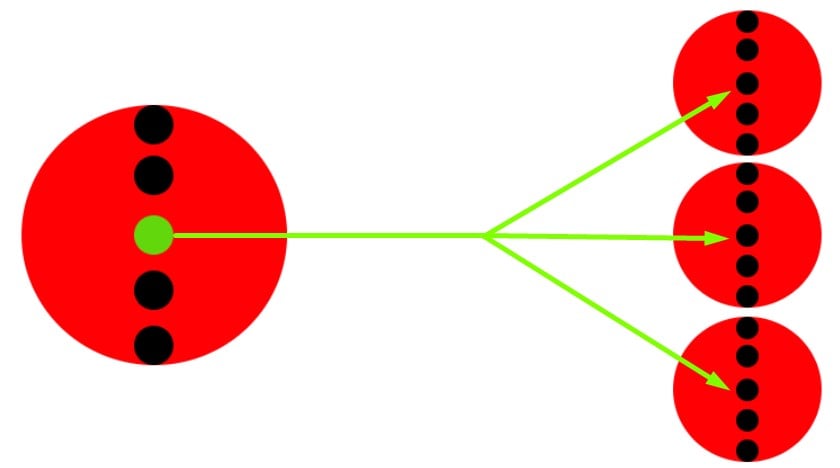
Another distinction is how the pattern’s implementation is built. Migration is optimized to handle massive amounts of data and process multiple records concurrently within relatively long time intervals. Broadcast patterns are designed to process records much faster while also avoiding crucial data loss in transit.
Imagine that you run an e-commerce website with drop shipping capabilities (a so-called drop shipping platform). Your catalog contains thousands of products that dozens of partners (drop shippers) display on their websites. Every time you change a product price at least for one item, you must provide data to your partners to let them know how to alter the prices they use. Otherwise, they will lose their profit on the difference between an item’s wholesale and retail price.
The best way to do so is to use the broadcast principle. Instead of exporting the entire product catalog, you transfer only the items that experienced price changes to your drop shippers. And you don’t need any price updates back in this system integration.
Is it also the broadcast data integration pattern if there is only one drop shipping partner? Yes, because it gets the data update as soon as new prices are applied in the source system (drop shipping platform), the process ideally happens automatically, and the source system doesn’t need to know what happens with the transferred entity in the destination system (drop shipper’s website).
Note that the original source system and the original destination system may swap roles. In our case, it happens when a product is sold on the partner’s website, and the drop shipper needs to inform the drop shipping platform (your website) about a new order. Why don’t we call it a bi-directional transfer?
It is still broadcast because the drop shipper’s website can change product prices anyhow, but it doesn’t affect the drop shipping platform’s catalog. The same is about orders: the source system only needs to send them to the destination system, which is responsible for order fulfillment. Do any manipulations over orders in the destination system affect the drop shipper’s database? No.
Furthermore, your website (the drop shipping platform), which is now the destination system, may have its own orders created by your online customers. This order data originates from none of your partners, neither it affects them.
What happens if database records need to be equally synchronized between the two systems?
Bi-directional sync
Bi-directional data integration is the act of merging two datasets available in two different systems so that they operate as one while remaining distinct. Basically, data is moved between the two systems in its entirety. This type of system integration is required because multiple tools or systems are used to perform different operations on the same dataset.

For instance, you have a customer record on your Shopware website. The detailed overview page contains all the data about your client. All the information is divided into three tabs: General, Addresses, and Order.
You decide to integrate your e-commerce website with a CRM system to simplify your customer interactions and leverage data analysis to study large amounts of information. As the first step of your integration, you will need to run data migration, moving all the existing customer information from your Shopware website to the connected CRM system.
However, it is vital to keep both systems consistent in terms of data. If you don’t do that, you may lose some essential details in a CRM system or have expired information about your clients on your website. In other words, your system integration would be imperfect and inefficient.
It is necessary to run a data transfer every time changes are applied on either side. You add new customer details on your Shopware website – provide an update to your CRM system. Customer data has been modified in the CRM – transfer the corresponding information to your e-commerce database.
In the bi-directional data synchronization pattern, the transfer involves the union of the scoped dataset – all customer records are exported and imported. It doesn’t seem very efficient if you have hundreds of customers in a database and only a few updated records. It looks way more efficient to transfer customer update that consists only of these few records. But it is the correlation data integration pattern that we describe below.
As for bi-directional transfers that involve a unified data scope, the destination system may dramatically speed up the exchange by updating only the changed records. You might have noticed similar opportunities upon import to e-commerce platforms. There is an option that allows you to ignore identical records upon import.
Correlation
The correlation data integration pattern is similar to the bi-directional data integration but is more compact and precise. It identifies the intersection of two data sets and does a bi-directional synchronization. But unlike the bi-directional pattern that synchronizes the union of the scoped dataset, the correlation integration pattern synchronizes the intersection. It is useful when you have two groups or systems sharing data only if both of them have a record representing the same item.

Let’s assume that you run a multichannel retail business represented by an online website and POS. While they are two distinct systems, they must be tightly connected to avoid issues. The less smooth your system integration is, the more issues you face.
For instance, you have your inventory on hand. Your e-commerce website illustrates the actual product quantities, but your POS system is not synced with your online store. If you run out of products via POS, the inventory is not updated on the website. Consequently, a customer can add out-of-stock goods to the cart, but you won’t be able to fulfill this order.
To avoid such issues, your online website and POS should be connected using a correlation data integration pattern. It will help you synchronize your inventory between your POS system and online website in real-time without transferring all product information. The pattern only moves the information related to the inventory update, such as product SKU, quantity, warehouse, etc.
When you sell an item via POS, the inventory update is transferred to your e-commerce website, reducing the number of items displayed on the front end. If the number of goods reaches zero when you sell them using your POS terminal, the corresponding items will be displayed as out-of-stock on your online storefront and vice versa!
Suppose your goods were all purchased via your e-commerce website 5 minutes ago. While they are still physically available in your warehouse, you cannot sell them via POS. If this information is not integrated between the two systems, you’ll get in trouble. However, the correlation data integration pattern updates your inventory information in the POS system (no other product attributes are involved), informing you that you can no longer sell physically available goods due to being sold out online.
Aggregation
Under the aggregation integration pattern, we assume the act of taking data from multiple systems and inserting it into one. Such system integration involves three and more systems.

Let’s assume that you run an omnichannel business that consists of a Magento website, POS, eBay shop, Instagram store, and other sales channels. You can turn your e-commerce site into a central hub that collects data from all sources. For instance, it keeps information about your inventory. Whenever customers buy something on other channels, inventory updates are sent to Magento, and the central database is updated. Thus, you always know the actual number of items in stock due to the aggregation integration pattern being used for your omnichannel system integration.
The aggregation pattern is useful because it allows you to extract and process data from different systems in a single application. This means that the data is current when you need it, is not replicated, and may be processed or merged to produce the desired dataset.
Types of system integration solutions
There are four most common system integration solution types:
- Vendor-built integration;
- Third-party P2P connectors;
- iPaaS;
- Custom integrations.
Let’s explore each one in more detail.
Vendor-built integrations
Vendors usually offer several native (vendor-built) integrations out-of-the-box to provide their clients with basic system integration possibilities. Vendor-built connectors allow users to link to external apps. For instance, your marketing automation tool may offer a native integration directly to Salesforce.
Such system integration solutions are convenient because they cover many popular use cases and don’t require complex configurations. At the same time, they are limited in handling customizations because vendor-built integrations are intended to sell and renew the vendor’s offering.
Below, you can see Mailchimp’s vendor-built integrations:

Third-party P2P connectors
Point-to-point connectors, like vendor-built integrations, can be very handy and cost-effective in terms of system integration. However, they are often domain-specific and incapable of accommodating larger business operations. A limited number of prebuilt use cases is usually an issue too. Also, most third-party connectors are hard to customize and scale. With thousands of cloud apps available today, developing distinct point-to-point system integration solutions for every potential use case is almost impossible.
These are a few connectors that we developed for Magento:
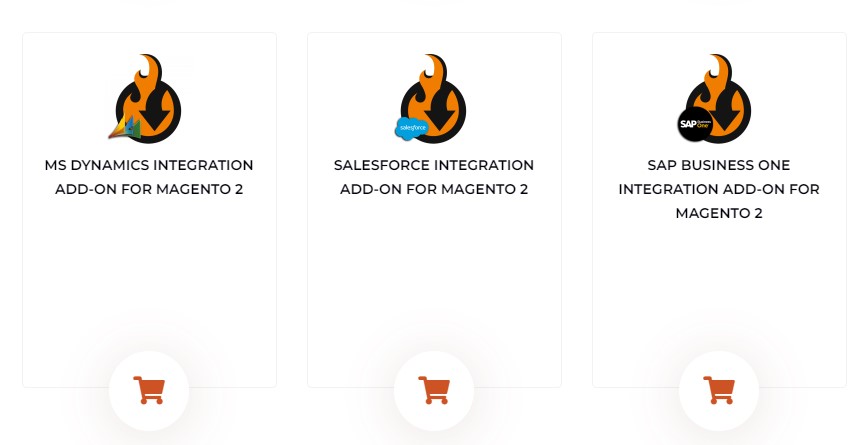
iPaaS
An integration Platform as a Service is a platform that standardizes how apps are integrated into an organization, making it easier to automate data synchronization and other business processes across applications. Adopting an integration Platform as a Service, or iPaaS, is one of today’s increasingly popular integration strategies.
The iPaaS definition above makes it clear that this approach provides the ability to eliminate manual processes in system integration. Also, it reduces dependency on spreadsheets, manual data editing, or third-party connectors and, at the same time, helps to increase the visibility, speed, and accuracy of system integration across the organization. iPaaS system integration solutions provide the most user-friendly and, at the same time, flexible way of system integration.
The following image illustrates a common Zapier iPaaS workflow:
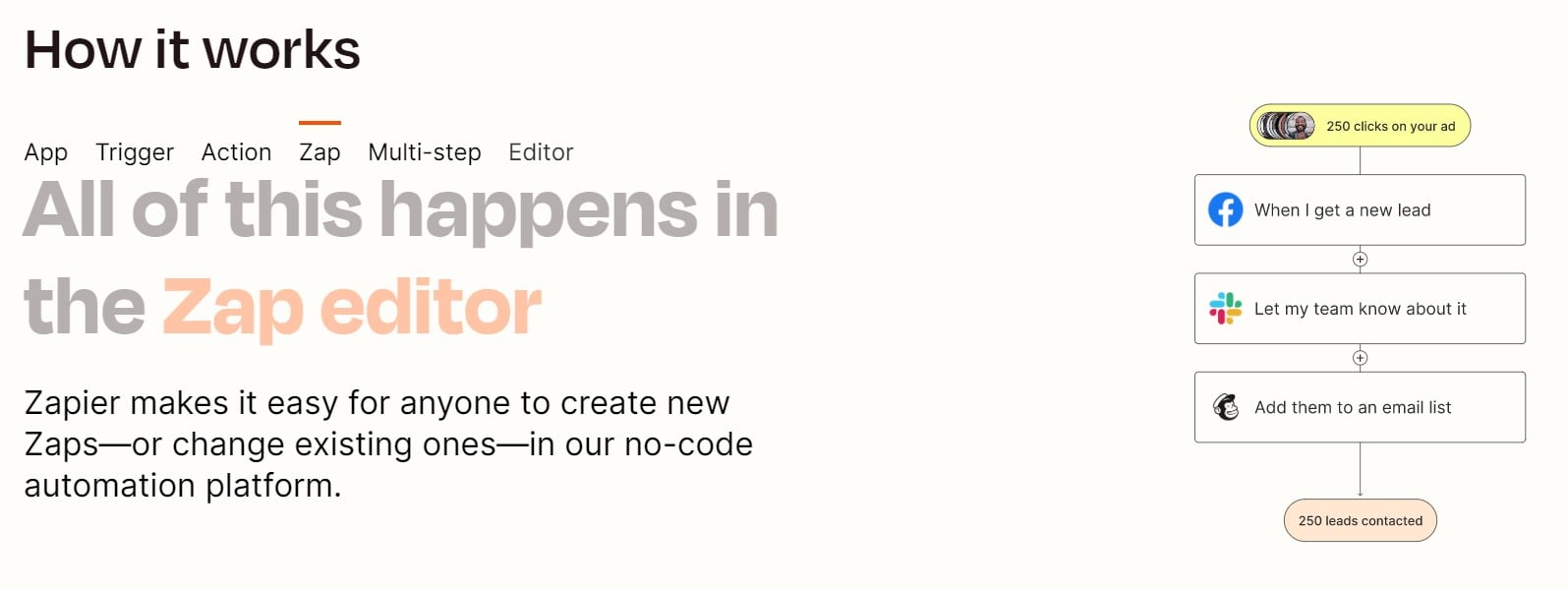
You choose an event in one system (a new lead on Facebook) that triggers actions on the connected platform (notify your team via Slack and add a new lead to Mailchimp). You can simply drag and drop triggers and actions, combining them into complex system integration that involves multiple platforms without writing a single line of code.
You will find more information about iPaaS in the next chapter.
Hybrid integration platform (HIP)
Consider HIP a more powerful and universal version of iPaaS that makes on-premises and cloud-based solutions work as a single unit. Such integration platforms are often used to integrate legacy systems that run on physical hardware with apps and databases in a private cloud and systems in a public cloud with minimum configuration.
HIPs are associated with managed APIs, reusable integration templates, advanced scalability, outstanding flexibility, and other benefits. High security and reduced integration and maintenance costs are also among the known HIP perks.
Custom system integration solutions
Custom integrations can be an incredibly powerful way of establishing system integration due to the employment of code and APIs. However, because they demand educated technical staff and take a long time to develop, they are challenging in terms of building a scalable, resilient tool. Integration, for example, necessitates crucial functionality such as error management and reliable data delivery, which are difficult to design from scratch for each integration. Furthermore, when processes evolve, these system integration solutions must be maintained and updated by a technical team that consumes more and more resources.
Industrial lifecycle system integration
Custom solutions are often associated with industrial lifecycle system integration – a system integration procedure that considers four integration stages: initial system implementation, engineering and design, project services, and operations. When combining systems and subsystems, this technique considers the requirements at each stage of the industrial asset’s lifecycle. The main result is a standardized data architecture that can function for the duration of the asset’s life.
It is the most complicated method of system integration based on custom development. In other words, you create a completely new tool that satisfies your system integration needs 100%. It requires lots of time, money, and effort, but in the end, you get a perfect instrument developed especially for your business.
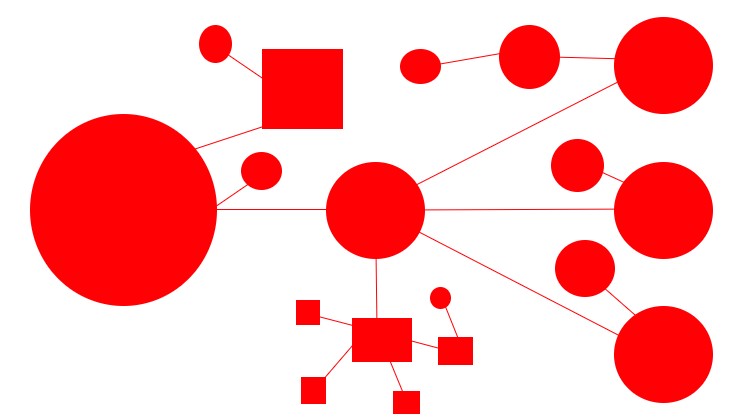
System integration examples
The Firebear team helped hundreds of merchants to integrate their e-commerce websites with ERP, CRM, and other platforms. Follow the links below to explore different examples of system integration.
- Magento 2 CRM Integration. In this post, we explain what CRM systems are, which instruments are the best, and how to run system integration between Magento 2 and the CRM platform of your choice. CRM systems have already gained the status of the biggest software market ever existed, so it is worth connecting your business with one of such tools. You will dramatically improve your interactions with clients and get the most in-depth insights into two essential things: how customers interact with your brand and how your employees work with your clients.
- Magento 2 ERP integration. Follow this link to learn more about enterprise resource planning and Magento 2 ERP integration. In a nutshell, it is a suite of integrated apps used for collecting, storing, managing, and interpreting your business data related to all major business processes. System integration with an ERP platform helps manage resources such as raw materials, cash, production capacity, and stocks in real-time. Besides, you get a groundbreaking solution for monitoring payrolls, orders, and purchases. Such system integration turns your e-commerce website into a more profitable business unit.
In this article, you will learn what enterprise resource planning is and how to implement it on your Magento 2 website. The following material describes the most popular Magento 2 ERP connectors that enable flawless system integration of your e-commerce website with the chosen tool. - Accounting Software Integration With Magento 2. To achieve higher efficiency in accounting, merchants can integrate their businesses with various accounting platforms. This kind of system integration provides the possibility to leverage various functional modules, including accounts payable, general ledger, trial balance, payroll, and others, to automate multiple routine processes and push accounting workflow to an entirely new level. In this article, you will discover crucial nuances of accounting systems and learn how to integrate Magento 2 with accounting software.
- Magento 2 Dropshipping Automation & System Integration. If you want to run an e-commerce business but don’t have space for a warehouse, system integration is your savior as well. You no longer need to turn your home into a warehouse or spend additional money to rent a warehouse. In this article, we describe how to run an online storefront without storing any items due to the correct system integration. Furthermore, we also explore how to organize such an enterprise so that you can reduce your daily routine and focus on various creative aspects of business management.
- SAP Business One Integrations. In this article, we describe the basic functionality of SAP Business One. This guide contains links to more specific materials that explain particular elements of this ERP tool. Besides, you will find brief system integration tutorials for each entity. You can connect SAP B1 to either your e-commerce website or other tools that are already integrated with your business.
- Pipedrive Integrations. Everything you need to know about Pipedrive and its integration with other platforms via vendor-built, third-party, iPaaS, and custom connectors.
- Salesforce Integration. This article sheds light on how to integrate Salesforce with different systems using vendor-built and third-party connectors. Also, the material focuses on the iPaaS-based Salesforce integration with external systems.
- Microsoft Dynamics CRM Integration. Four different types of Microsoft Dynamics CRM integrations are discussed here, along with the most popular Microsoft Dynamics CRM integrations: QuickBooks, Jira, Salesforce, HubSpot, and Magento 2. You will learn which objects can be synced between the two systems and how to create a workflow to keep the integrations automated.
- ActiveCampaign Integration. In this post, we’ll talk about ActiveCampaign, a well-known provider of cloud-based marketing and sales automation tools, and ActiveCampaign integrations. You will learn about the major objects on the platform that can be synced between this marketing and sales automation software solution and external systems. We discuss the four types of ActiveCampaign integrations: vendor-built and third-party connections, iPaaS, and custom-built solutions. Following that, you’ll discover more about the top five ActiveCampaign integrations: Hubspot, Salesforce, Gmail, Pipedrive, and Outlook. We show you how to link Active Campaign to them using iPaaS and third-party connectors.
- ERPNext Integration. We will explain what ERPNext is and what ERPNext integrations are in this article. You will learn about the ERP system’s core areas of operation as well as the tools available with ERPNext. Then, we move on to the ERPNext integrations. You’ll learn about native connectors and third-party integrations. This chapter also discusses the benefits and prospects associated with iPaaS-based ERPNext integrations, followed by a brief discussion of bespoke connectors. The final section focuses on the most common ERPNext integrations. You will learn how to use iPaaS to link your ERP system to Magento 2, WooCommerce, Quickbooks, Salesforce, and Gmail.
- Magento 2 Integration. Learn about the available Magento 2 integrations. We go over each of the available categories of connectors: native, third-party, iPaaS, and custom. You will then learn about popular Magento 2 integrations and how to set them up. We talk about Slack, Microsoft Dynamics, ERPNext, Quickbooks, and Salesforce integration with Magento 2.
- Shopify Integration. Following a brief overview of the platform’s basics, we move on to the Shopify integrations. You will learn about the many types of Shopify integrations and how to connect your e-commerce website to various external systems. The next sections go through native, third-party, iPaaS, and bespoke Shopify integrations. Some popular Shopify integrations are described as well.
- Stripe Integration. In this article, we talk about one of the most well-known platforms for payment processing used by businesses worldwide. Although Stripe provides a number of native integration possibilities, these are frequently insufficient. As a result, there are numerous options available that promise to link your company to Stripe. We define Stripe and outline its salient traits, benefits, and drawbacks. You will then discover the different kinds of Stripe integrations that are offered. We weigh the advantages and disadvantages of native and third-party connectors, iPaaS integrations, and custom solutions. The most well-liked Stripe connectors can be found with Quickbooks, Pipedrive, Salesforce, HubSpot, and Xero. You will discover links to the necessary native and third-party connectors even though we concentrate on the iPaaS method.
- Mailchimp Integration. Mailchimp integrations are discussed in this article. First and foremost, you will discover what Mailchimp is. We take a look at the top five platform features. Following that, you will discover the benefits and drawbacks of Mailchimp. A section devoted to system integrations comes next. It categorizes Mailchimp integrations into four types: native, third-party, iPaaS, and custom. Finally, we’ll look at some of the most popular Mailchimp integrations. Integrations include Facebook, Google Sheets, Typeform, Pipedrive, and HubSpot. We investigate the iPaaS opportunities and provide access to alternative native or third-party connectors.
- HubSpot Integration. The article that follows provides information on HubSpot and its integrations. You will discover what makes this platform well-known and how to connect it to other systems. The most well-liked HubSpot integrations—Salesforce, Quickbooks, Shopify, Mailchimp, and Zendesk—are also the subject of this material. In order to integrate HubSpot with these five systems, it focuses on the iPaaS possibilities and provides links to alternative native and third-party connectors.
- Freshdesk Integration. The integration of Freshdesk with other systems is covered in this article. We start by outlining what Freshdesk is, including the advantages and features of the core platform. Next, we move on to the section about Freshdesk integrations. You will discover what Freshdesk integrations are and how to implement them.
System integration ideas
You can enhance your business workflow with the help of the following e-commerce tools:
Product Visibility
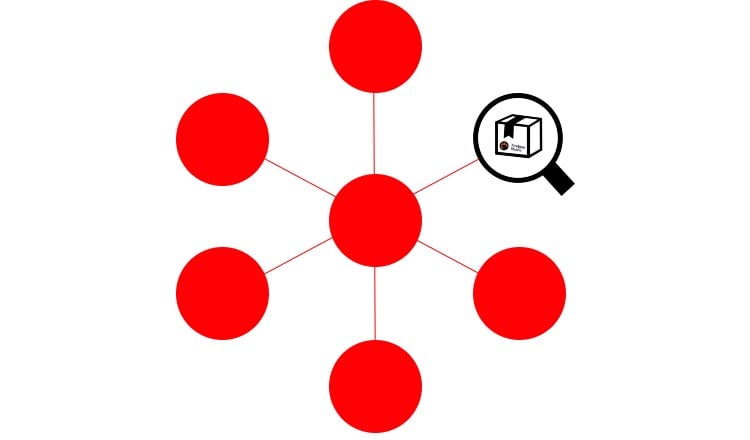
Stores are no longer just places to make purchases; customers may now enjoy discovery experiences there as well. Thus, rather than the goods themselves, the visibility of the product may have a significant impact on the selection of items. As a result, retailers must increasingly focus on their customers and their experiences to provide goods in a way that piques consumers’ attention and pushes them to make a purchase. Discover product visibility and why it is important for every organization in this article.
We highlight five categories of tools that can be utilized to increase the visibility of your brand and products. A list of the corresponding software alternatives is also provided on the website. Think about integrating your e-commerce website with one of them to make your customer experience better. Contact us to get help with this system integration. You will also find some useful tips for increasing the visibility of your product in the article.
Referral Marketing
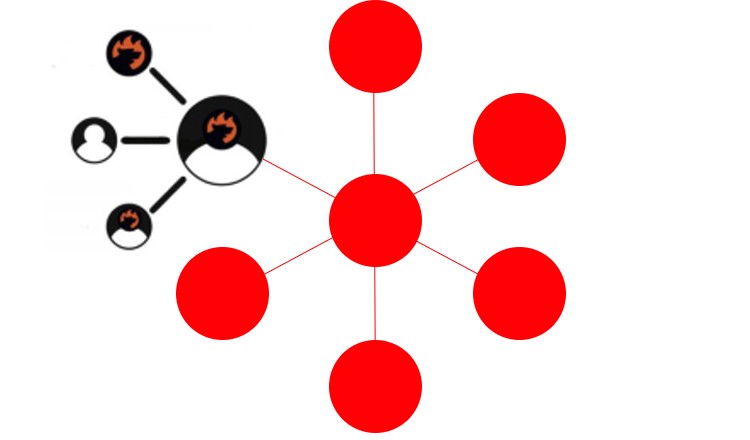
This article goes over some of the most common referral marketing tactics, platforms, and services. The definition of referral marketing and how it varies from word-of-mouth marketing will be explored. We discuss the significance of referral marketing, including its operating method and efficiency considerations. We also discuss the best referral marketing software options. The article includes a list of 15 referral marketing services, so you will have enough information to consider what system integration works best for your business. You will also learn how referral marketing benefits can improve your client connections.
Customer Support
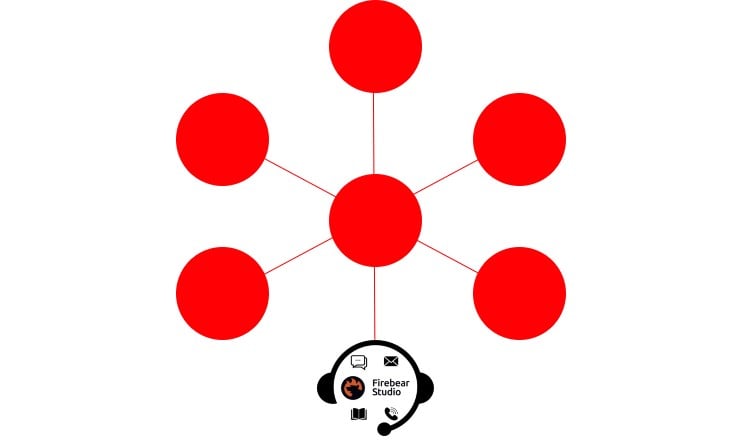
This article discusses customer assistance tools, platforms, and services. The best customer service tools for e-commerce and other businesses have been thoroughly researched. You will find a list of 20 systems, including live chats, email assistance services, chatbots, social media integration utilities, video chats, helpdesk services, remote desktop access tools, knowledge bases, and more.
In addition, we look at how to select a customer support product that properly meets your company’s requirements. Select one or several instruments and run system integration between them and your business. You will understand the critical criteria to consider while selecting the most suitable solution. Furthermore, we discuss how to fine-tune your customer service methods to maximize your interactions while utilizing the best e-commerce platforms for offering exceptional customer service.
Email Marketing
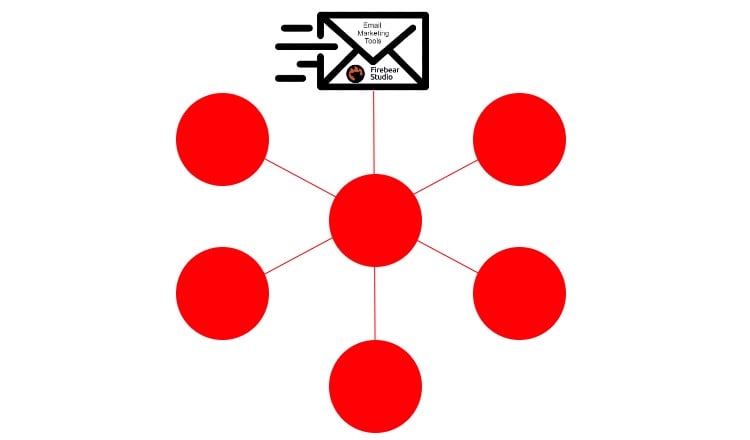
In this piece, we look at email marketing tools, platforms, and services. You will learn what email marketing is and how to select the best email marketing solution for your company’s needs. We discuss four types of email marketing, describe five steps for a successful marketing campaign, and review over a dozen email marketing systems. You will find the key factors for evaluating email marketing services along with the advantages of email marketing. Email marketing automation is another topic highlighted in this blog post. Use this information to enhance your business with new system integrations.
As you can see, in addition to different CRM, ERP, and accounting systems, you can integrate other solutions, including marketing tools, helpdesk services, and product visibility platforms, with your online business. Along with that, it is possible to integrate various tools with one another, like SAP Business One and Zoho or Pipedrive. And you can leverage iPaaS systems to integrate all these tools into one another.
The evolution of integration systems
Below, we explain iPaaS in more detail and describe other approaches related to system integration that appeared earlier and paved the way for iPaaS: ESB and ETL. You will also learn the role of ETL, ESB, & iPaaS in system integration.
What is iPaaS?
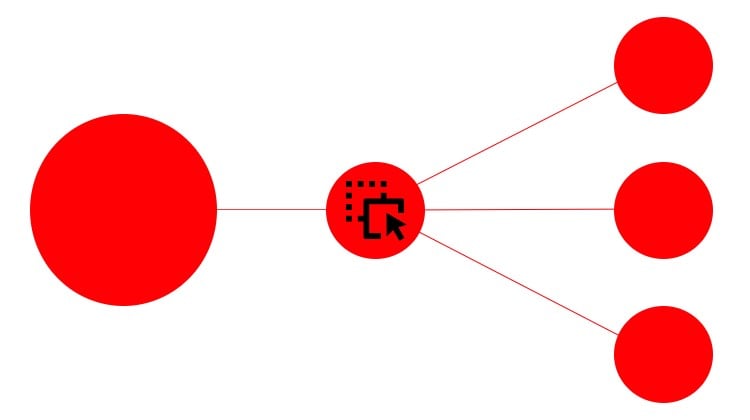
iPaaS solutions standardize and simplify how applications are added to an organization. Their goal is to transfer static or transactional data across apps automatically and with neither coding nor special skills. The critical system integration functionality is usually available to everyone out of the box via a drag-and-drop interface, following the best no-code practices.
Although any company can benefit from using an iPaaS tool, leveraging an integration platform is more suitable for growing businesses since they are in need of tools for standardizing how to monitor, maintain, and update processes across a frequently evolving set of apps.
If you run a small business, you might not need to switch between dozens of instruments. But an iPaaS solution can still help you integrate with a chosen few.
As for big companies, they may already focus on a particular selection of apps that remains constant. iPaaS may be a perfect mediator between these applications.
Companies of any size can quickly integrate external tools into business processes without establishing integration functionality from scratch. And, as we’ve already mentioned, even non-technical users can build, manage, and maintain integrations with iPaaS systems that follow the no-code principle.
In terms of integration methods, iPaaS solutions represent horizontal system integration and deliver all data integration patterns that we described above depending on exact business needs.
Although iPaaS and ESB are associated with horizontal system integration, they differ. The latter typically operates on-premise and is implemented as an integration architecture approach to solve application integration with local or legacy systems. iPaaS, in its turn, typically runs in the cloud and is designed to mainly handle integrations between various cloud services and different SaaS solutions. But since most iPaaS solutions support hybrid integration scenarios and share approaches similar to ESB, they bridge the gap between on-premise and cloud.
Common iPaaS features
Functionalities of integration Platform as a Service solutions typically include
- Intuitive interface. iPaaS systems are usually associated with a centralized interface where you can seamlessly create, manage, and govern integrations, automate data exchange, and control other processes typical for system integration.
- Endpoint connectors. We’ve already mentioned that you don’t need to be a programmer to connect apps with iPaaS to establish system integration. Due to built-in endpoint connectors, you can integrate applications without writing a single line of code and dealing with APIs.
- Data delivery. iPaaS systems are very reliable in terms of data delivery. They keep data on hold until it is transferred to the destination system.
- Data governance. Some iPaaS systems let you create a system of permissions to enable only particular users to access data. Thus, you eliminate the human factors and make your system integration more secure.
- Error handling. Since iPaaS systems are not ideal, you will have to deal with eros from time to time. However, a reliable iPaaS solution indicates where errors occur in the data transfer.
- Developer tools. If you need a more specific solution that follows your particular needs, iPaaS systems offer developer tools enabling deep customization for building unique integration flows.
The first generation of integration Platform as a Service solutions was more complicated than their modern counterparts. It was developed in response to basic market demands when the number of business applications was small. However, it has exploded dramatically within the past years. Along with that, lots of responsibilities that IT experts shared in the past shifted towards non-technical specialists. These conditions pushed iPaaS tools forward so that they could satisfy the evergrowing market demands.
Now, integration platforms need to be as intuitive as cloud apps, guiding users through the synchronization process so that system integrations can be easily distributed across different parts of the organization, freeing up IT bandwidth for other projects and more valuable operations. iPaaS connectors should be easy to deploy, customize, maintain, and scale, delivering best practices as pre-built integrations. And pricing models should be flexible enough to satisfy the needs of both small and big businesses.
Common iPaaS workflow
Since automation is one of the most crucial strategies for ensuring the operational success of integrating systems, iPaaS technology is becoming a more significant component of a company’s technological stack and its system automation strategy. Therefore, it should be considered far sooner in a company’s life cycle than it is currently.
iPaaS may concentrate integrations and automation on a single platform, decreasing the time and resources required to establish and manage these integrations in case of different system integration types.
A well-thought-out integration strategy supported by a strong systems integration software solution guarantees that
- Apps function together;
- Most manual processes are eliminated;
- There is no lack of visibility;
- Errors are prevented;
- Business becomes more adaptive and flexible.
If you need to synchronize data both ways between two systems, a common iPaaS workflow may look as follows:
- The Cron node schedules the workflow to run automatically within a predefined time interval (minute, hour, day, week);.
- The two integrated systems (which are also considered nodes: System1 and System2) pull in data sets for the same entity (orders, customers, products, etc.);
- The iPaaS system uses special nodes (Merge1 and Merge2) to remove key matches, identifying the items that uniquely exist in both systems independently. Merge1 gets information from System1 and System2, and Merge2 gets information from System1 and System2 as well. Next, Marge1 identifies data unavailable in System 1, while Merge2 discovers records unique to System2.
- After that, the iPaaS system updates both System1 and System2 with items that are not available in them, providing System1 with the unique information from System2 and vice versa.
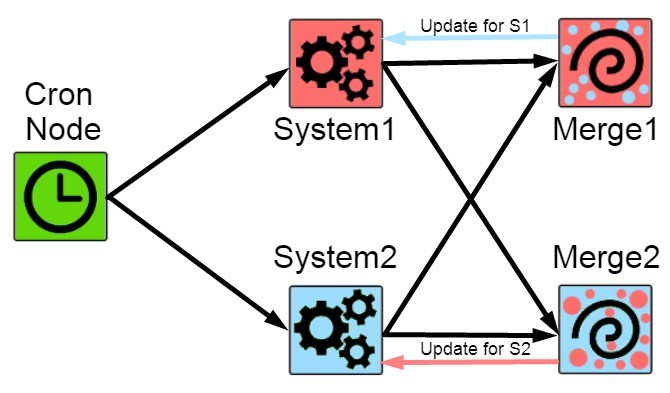
As you can see, a typical correlation data exchange pattern is utilized. It is only a single example of a common iPaaS workflow. Your goal is to create a combination of nodes satisfying your system integration demands. Since common iPaaS systems are flexible and intuitive, you can easily create a workflow that satisfies your business requirements.
For instance, the iPaaS workflow described above can be customized as follows:
- You can edit the cron node, specifying any update interval.
- You can select any of the supported entities for the system node to provide.
- You can choose one of many special nodes and then customize them to apply any changes to the retrieved information.
- You can choose how to apply the update to the integrated systems: it can be either equal synchronization or updates for one of the systems. At the same time, you can deliver the data scope (bi-directional sync) to a third-party system or transfer just the intersection (correlation). Moving data from multiple sources to one (aggregation) is also possible. You can even use iPaaS for data migration or multiple independent broadcasts.
Enterprise service bus in system integration
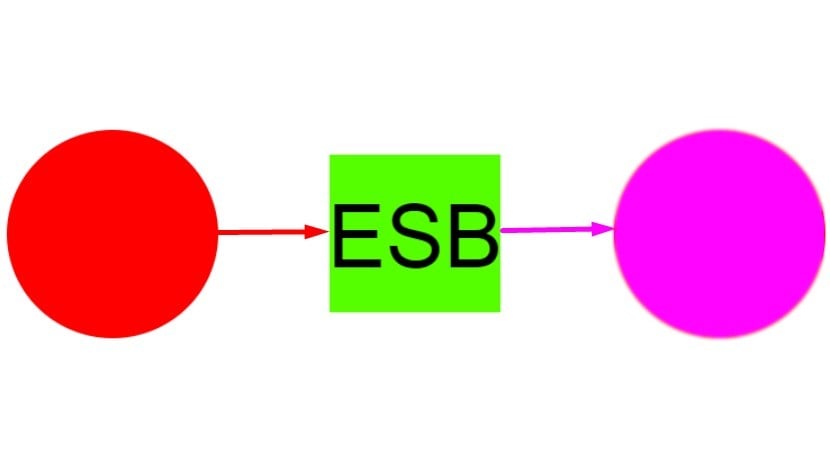
Since we’ve mentioned ESB above, let’s spend a few more minutes on this phenomenon since it is important for a better understanding of system integration. In a service-oriented architecture, an enterprise service bus is used to implement a communication infrastructure between mutually interacting software applications. It is a software architecture for distributed computing and a subset of the more broad client-server model, in which any program can act as either a server or a client.
Regarding high-level protocol communication across applications, ESB increases agility and flexibility. Its principal application is in diverse and complicated service landscape enterprise application integration. And these are the exact characteristics iPaaS requires to deliver its flexibility for any system integration.
In a nutshell, the ESB decodes a message to the valid message type and sends it to the proper consumer service.
The ESB architecture was developed to provide a standard, structured, and general-purpose idea for describing the implementation of loosely linked software components (services) that are anticipated to be independently deployed, running, diverse, and dissimilar within a network. Although there are no global standards for enterprise service bus concepts or implementations, the enterprise service bus has been embraced as the de facto standard for a service-oriented architecture by most message-oriented middleware providers.
As a technical framework, a common ESB implementation employs event-driven and standards-based message-oriented middleware in conjunction with message queues. In addition to the adoption, translation, and routing of client requests to appropriate answering services, ESB provides commodity services. Its primary duties include:
- Message routing between services;
- Message exchange monitoring and control;
- Conflict resolution between communicating service components;
- Service deployment and versioning control;
- Commodity services:
- event handling;
- data transformation;
- mapping;
- message and event queuing;
- exception handling;
- protocol conversion;
- security.
- Marshal use of redundant services.
ESB architecture benefits
The ESB architecture is associated with several benefits. For instance, it enables scaling from point solutions to enterprise-wide deployments. This feature makes the iPaaS system most flexible in terms of business growth. You can start using an iPaaS platform as a small business and add new functionalities as your company grows.
Another notable advantage of ESB is its focus on configuration rather than integration coding. This concept results in that any non-technical specialist can leverage an iPaaS tool to implement system integration of any complexity.
And due to the lack of a central rule engine, ESB-based systems become scalable, flexible, and customizable. You can see that many iPaaS systems deliver all these benefits too. Another layer of flexibility is guaranteed by the easy plug-in and plug-out and loosely coupled system of ESB.
As for the disadvantages associated with ESB, they include reduced communication speed within the system and the risk of bringing down all communications in the enterprise by a single failure point.
Extract, transform, load
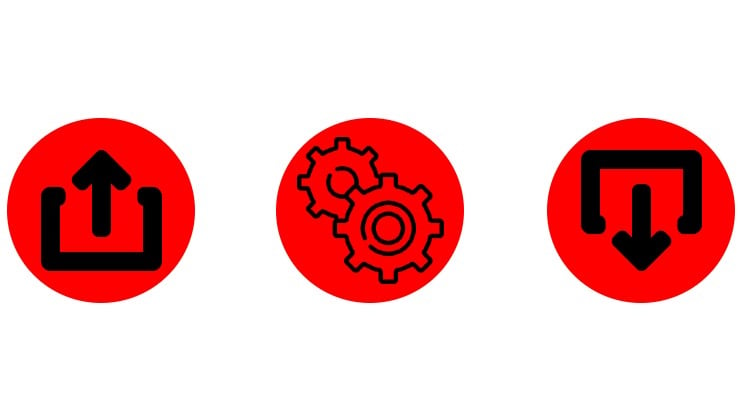
ETL is another concept that we’d like to explain in the course of system integration. Consider it a pre-ESB stage. ETL stands for extract, transform, load. In computing, it is a three-phase process of data extraction, transformation, and loading into an output data container. The data can be aggregated from one or more source systems and outputted to one or more destination systems. ETL software often automates the entire data transfer process and can be run manually or on recurring schedules, as single jobs or as a batch of jobs, ensuring system integration.
ETL systems are frequently used to combine data from several applications, which are typically produced and managed by different vendors or housed on separate computer hardware. A correctly designed ETL system pulls data from source systems, enforces data type and data validity criteria, and assures structural conformity to output requirements. Some ETL systems can also send data in a presentation-ready format, allowing application developers and end users to make decisions.
The role of ETL, ESB, & iPaaS in system integration
ETL tools have begun to evolve into Enterprise Service Bus platforms, which today cover much more than just data extraction, transformation, and loading. Data profiling, data quality, and metadata features associated with ESB platforms are now available from several ETL suppliers.
While developers were among the key audience of ETL tools, the new trend is to provide business users with the same functionality so they can create connections and data integrations when needed. However, the necessity to upgrade ETL to ESB sounds questionable because non-technical users can already leverage a bunch of iPaaS solutions. But if your iPaaS no-code system integration instrument doesn’t satisfy particular business requirements, then you can either switch to another iPaaS tool that offers everything that you need or try to create a custom solution that incorporates ESB or ETL principles.
Considering the number of systems that exist nowadays and the number of unique business cases, you won’t find a perfect system integration solution that fits everyone. While no-code iPaaS tools may look perfect for a broad audience, they lack the flexibility that more complicated tools offer. Therefore, most iPaaS systems offer free demos for a limited amount of time. It is always a good idea to test them before making any decision.
What to do if the selected instrument is not enough? You may need to switch to a custom solution and create your system integration tool from scratch, considering your unique business demands and following the best ELT and ESB practices.
Understanding APIs
The capacity to communicate, integrate, and connect your products and services with other software applications – system integration – is critical to growing your business on both the web and mobile. And APIs are essential for accomplishing these processes with simplicity, flexibility, safety, and control. But what does API stand for?
API stands for Application Programming Interface, where:
- Application refers to any software solution with a different function.
- Programming refers to any process of creating a set of instructions on how to perform a task.
- Interface refers to a contract of service between two apps that clarifies how the two systems communicate with each other using requests and responses.
An application programming interface is represented by a set of tools, definitions, and protocols used to establish system integrations by connecting application software and services. In other words, it provides your products and services with the ability to communicate with one another and other products and services without having to build new connectivity infrastructures.
Still, you need to be a coder to work with APIs directly. But non-technical users have no-code solutions to impact them indirectly. Consider them instruments for taming APIs. As a user of a no-code instrument, you no longer need to work straight with the application programming interface. Your routine is limited to selecting structural blocks in your no-code system integration solution that does all the dirty work for you. You don’t even need to know what APIs are utilized and how they work. Simply drag and drop a corresponding structural block (node) to its place in your connector/integrator/app.
API architecture in two words
Let’s briefly explain API architecture in terms of client and server. The former is an application that sends a request. The latter is an application that sends the response. For instance, your mobile app displays the weather forecast. To display current information, it needs to send a request to a database outside of a mobile device. In this example, this database is the server, and the mobile app is the client.
It is also necessary to define what an API gateway is. Under an API gateway, we assume a tool that sits between a client and a collection of backend services and acts as a reverse proxy to accept all API calls, aggregate various services required to fulfill these calls and return the appropriate outcome.
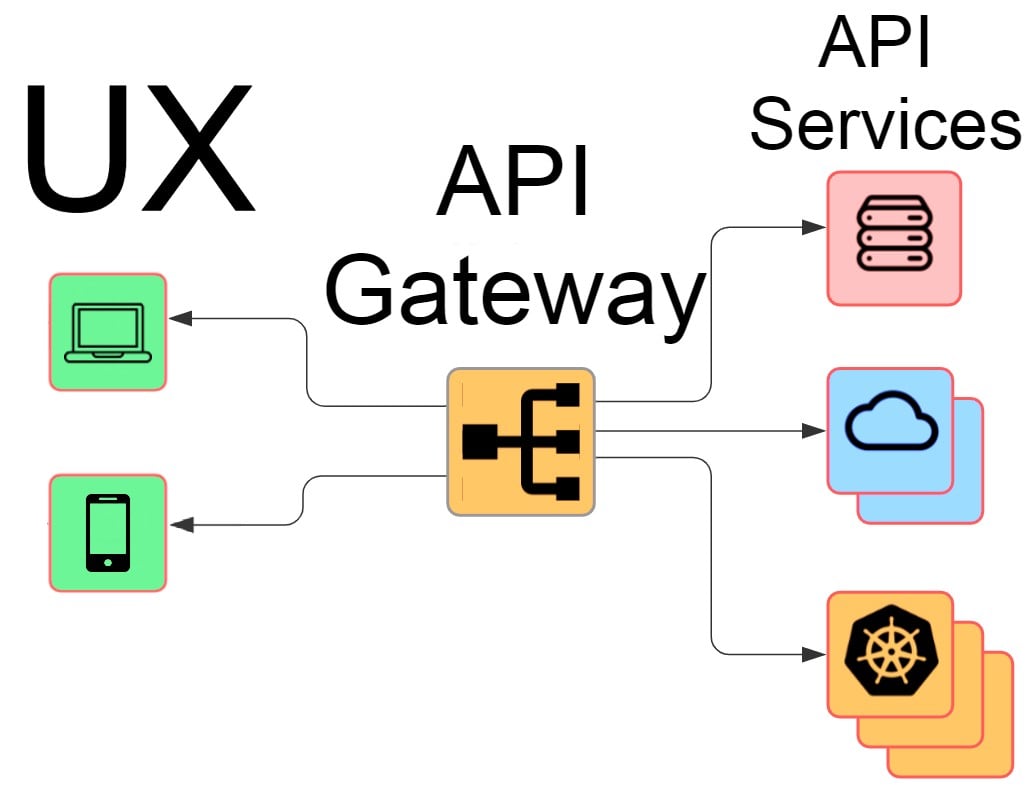
As you might have already guessed, while APIs are always used in system integration, they are aimed at developers only. Non-technical users cannot leverage them directly. They work with APIs rather indirectly by leveraging different iPaaS solutions.
Different types of APIs used in system integration
There are lots of different APIs. In terms of privacy, there are three types:
- Private – such APIs are available for internal use only;
- Partnered – such APIs are shared with specific partners;
- Public – such APIs are available to third parties.
And it is not the only division of APIs. You’ve probably heard about REST, SOAP, and GraphQL APIs. In the table below, you can see different APIs and how they can work depending on when and why they were created and what protocols they follow:
| SOAP | SOAP stands for Simple Object Access Protocol. In such APIs, the client and server exchange messages using XML. SOAP API documentation, a WSDL file, is written in XML and saved as a .wsdl extension type. SOPA API was popular in the past but is being displaced now by more flexible APIs. |
| HTTP | An HTTP API is an API that uses Hypertext Transfer Protocol as the communication protocol between the two systems. It exposes endpoints as API gateways for HTTP requests to access a server. |
| RPC | RPC stands for Remote Procedure Calls. In such APIs, the client completes a function on the server while the server transmits the output back to the client. It is the predecessor of REST APIs that has been around since the 70s. |
| gRPC | Google has recently updated RPC to gRPC, which is now used with its microservice architecture. gRPC API uses Protobuf instead of JSON/XML. Besides, it is built on HTTP 2 rather than HTTP 1.1. |
| REST | REST API stands for Representational State Transfer. It is an architectural pattern for creating web services and the most popular API today. With REST API, the client sends requests to the server as data. The server, in its turn, uses this client input to start internal functions. After that, it returns the output data to the client. REST reads data in multiple formats, such as Plain Text, JSON, HTML, etc. Its documentation, Swagger file, is written in JSON format with the extension of .yaml or .json type. |
| Falcor API | Falcor employs much of the REST API architecture with paths and references but introduces automation in much of the request structure. With Falcor, you can simply use data as needed instead of requesting it from the server. The system determines client-side or server-side data and then retrieves it automatically. |
| Websocket | Websocket is a modern web API that passes data using JSON objects. With WebSocket APIs, two-way communication between client and server occurs. Since the server can send callback messages to connected clients, |
| GraphQL | GraphQL, in its turn, is a query language and server-side runtime for APIs built as an alternative to REST. Its key goal is to provide clients with exactly the data they request, making APIs faster, more flexible, and developer-friendly. With GraphQL, developers can construct requests that pull data from multiple data sources in a single API call. |
A place of API in system integration
Although SOAP, REST, and other apps are used to connect and integrate numerous software applications or data sources, they read and understand messages in different formats. Consider them as people who speak different languages, Mongolian and Georgian, for instance. As a result, we require an interpreter to establish communication between them. This is where a system integration software solution comes into the game since it can convert one communication format to another, becoming an interpreter. It may be a no-code system integration platform or any solution that follows complex coding patterns and principles. In both cases, the two systems communicate with one another using their APIs.
For instance, you have a MySQL database and a Java program. They are the two systems that should be integrated. However, you cannot connect them directly. A connector file is required to establish the connection.
In the no-code approach, you don’t need to create or customize this file. It is already available within your connector. You just need to use the no-code platform’s intuitive interface to specify the points of system integration (platforms that you want to connect) and the way they interact with one another. Thus, the ability to connect any two API endpoints together without even knowing this terminology is a significant feature of current system integration platforms.
Modern providers of system integration software support seamless connections between REST-REST, SOAP-SOAP, REST-SOAP, SOAP-REST, or simply by using a centralized database. In the latter scenario, data can be written by one application and read by another using batch processing or message queues, where messages are written to queues and read in real time by the application. Once again, no-code dramatically simplifies everything, so you only need to check whether the selected system integration platform supports the instruments that you want to connect.
Conclusion
System integration can be challenging for organizations. With more archaic approaches, the overall return on investment may be diminished after implementing new software solutions. However, if you use iPaaS, you eliminate this challenge because a reliable integration platform delivers flexible opportunities in terms of system integration. You can easily connect your business to numerous external points, and new software solutions are usually added relatively fast.
As for the lack of trust to share data with other companies and unwillingness to outsource various operations to a third party, iPaaS systems help to avoid these and similar issues by introducing an outstanding security level. You won’t face a lack of clear communication and responsibilities, like in the case of more traditional system integration.
And the high cost of integration is not something you will face while using an iPaas system. Of course, it is not as cheap as a built-in integration which may be available out of charge or a third-party connector, but yet less expensive than creating custom system integration from scratch.
While multiple challenges resulted in creating hurdles in the past, they no longer slowdown systems integration within and among companies. Modern iPaaS tools deliver clear communication and simplified system integration. Along with that, other benefits of system integration include:
- Non-technical specialists. While ESB and ETL systems of the past are used by IT specialists only, modern iPaaS systems are available to everyone.
- Reduced human errors. Since manual user data entry is eliminated, system integration is associated witn a dramatically reduced error count.
- Decreased operational costs. Offload querying and reporting from expensive operational systems can be moved to cheaper commodity systems, reducing the overall costs of operation.
- Outstanding scalability. iPaaS systems are exceptionally scalable due to their nature. You can easily start using them as a small entrepreneur and become a robust market player with the same system integration platform.
- Better productivity. The most important advantage of iPaaS system integration is that it boosts the company’s productivity tremendously.
- Management and analysis. A high number of programs smoothly integrated with one another makes it easier to analyze and manage how a company works.
- Support for legacy systems. Flexible and powerful system integrations provide the only way to prolong the life of out-of-date, legacy systems by enabling real-time data sharing.
If you want to integrate any system with your business tools in the most effective way – write to us!
System Integration FAQ
What is system integration?
System integration is the process of combining frequently incompatible systems in a way that focuses on enhancing value to the customer while also adding value to the business.
What is the purpose of system integration?
The core system integration goal is to streamline and simplify communication between the organization’s internal systems and the third parties the organization works with, accelerating the outflow of information and cutting back on operational costs.
What are 4 system integration methods?
Vertical system integration (silo), Hub-and-spoke system integration (P2P), Star system integration (spaghetti), and Horizontal system integration (ESB) are four common methods of system integration.
What are common data integration patterns?
Migration, Broadcast, Bi-directional synchronization, Correlation, and Aggregation are common data migration patterns used in system integration.
What are 4 system integration types?
Vendor-built integrations, Third-party connectors, iPaaS, and various custom solutions built from scratch are four system integration types.
What is automation?
Automation is the reduction of human input in all spheres of modern business by the means of software applications and digital instruments. This transformation aims to streamline a business for simplicity, increase service quality, reduce human impact, decrease the count of errors, and reduce costs. Automation is broadly used in system integration.
What are the four types of automation?
Basic automation, process automation, integration automation, and AI automation are four types of automation. You can freely use each one in system integration.
What is no-code development?
No-code development is a process of creating websites, applications, and software solutions without writing a single line of code. You can leverage this approach to create system integration automation solutions.
What is a no-code system?
Under a no-code system, we assume a programming platform that uses a visual development interface equipped with a drag-and-drop facility that enables non-technical users to create applications by simply moving their components. Different iPaaS platforms are no-code system integration tools.
What does API mean?
API stands for Application Programming Interface. It is a software intermediary that allows two applications to talk to each other. Consider it a messenger that delivers your request to the provider and then moves the response back. APIs are the foundation of system integration. They are used to connect and sync two or more systems.
What is an iPaaS system?
iPaaS stands for integration Platform as a Service. It is a suite of cloud services that enable the development, execution, and governance of integration flows to connect any combination of on-premises and cloud-based processes, services, and applications. iPaaS is a platform that provides the easiest way to establish system integration between two points.
What is the difference between iPaaS and SaaS?
iPaaS allows users to integrate apps that reside on the cloud or on-premise to have uninterrupted data flows between them. SaaS, in its turn, serves as a key piece of technological infrastructure for the enterprise.
What does ESB mean?
ESB stands for enterprise service bus and is a middleware platform that works behind the scenes to aid application-to-application communication. In other words, it is a “bus” responsible for delivering information between two systems. Such platforms are widely used to integrate systems.
What is ETL?
ETL stands for extract, transform and load and is a process that combines data from multiple sources into a single data store and then loads it into a target system. ETL is considered a pre-ESB process, which is also an important part of many system integrations.





